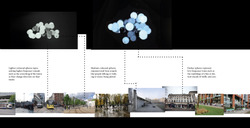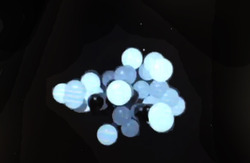8// Linking the animation to specific sounds in the recording and rendering them so that they respond accordingly. We had to identify the exact sounds that we wanted to put into the animation otherwise the spheres would not react as well (there was a lot of background noise before we cleared it up)
Posted 22 May 2015 12:09
7// Our final visuals for our presentation made by Anton. We included annotations using after effects to make the recording clearer to the listener on what it was they were hearing.
Posted 22 May 2015 12:00
6// Analysing our transect - pinpointing noises we would use in our animation
Posted 22 May 2015 02:05
5// Carrying on with site analysis and looking further into the recordings that we took and why certain sounds were there (events happening in the area, musicians, dancers, policemen).
Posted 22 May 2015 02:02
4// Using a software programme, Blender, we tried to link animations to a recording of a transect through Piccadilly Gardens
Posted 22 May 2015 01:27
3// Started to analyse the site in terms of sound and identify sources of sound. Making a simple site model helped break down the different areas of Piccadilly Gardens and why some parts were more noisy than others - something that wasn't entirely clear when just walking on the ground.
Posted 21 May 2015 22:29
2// Site analysis - looking at specific sounds and their locations and how they respond in their surroundings. I looked at how these sounds were dispersed and manipulated by surfaces. By using my recording of the periphery of Piccadilly Gardens I analysed sound levels around the site.
Posted 18 May 2015 12:32
1// On the second day we collected the sound recording quipment and headed to various sites to start on our site analysis. My group picked Picadilly Gardens as our first site and took a recording focussing on specific sounds: birds taking flight, bicycle tires, shoes on the pavement, children laughing, trams and buses stopping. This information we will collate to then start on our project.
Posted 13 May 2015 12:22







